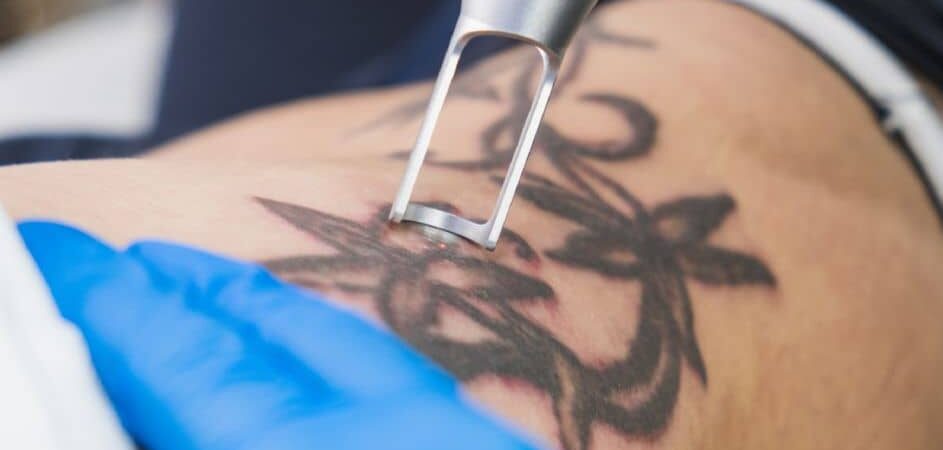
Tattoos have been a form of personal expression for centuries, but as time progresses, so do our tastes and circumstances.
This evolution has led to a rise in the demand for effective tattoo removal solutions. Whether it’s due to a change in personal style, a career shift, or simply a desire for a clean slate, people are seeking out the best techniques to erase their ink.
The field of tattoo removal has made significant strides, offering safer, more efficient, and less painful methods than ever before.
In this article, we will explore five cutting-edge techniques for effective tattoo removal, ensuring that you have the knowledge needed to make an informed decision.
1. Laser Tattoo Removal
The Gold Standard
Laser tattoo removal is widely regarded as the gold standard in this field. It uses high-intensity light beams to break down the ink particles in the skin. These fragmented particles are then naturally eliminated by the body’s immune system.
Advanced Technology
Recent advancements have led to the development of Q-switched lasers and picosecond lasers, which offer faster and more precise treatments. Q-switched lasers emit energy in short bursts, effectively targeting the ink while minimizing damage to surrounding tissues.
Picosecond lasers, on the other hand, deliver energy in even shorter pulses, making them highly effective at removing stubborn colors and reducing the number of sessions required.
What to Expect
Patients should expect multiple sessions, spaced several weeks apart, to achieve optimal results. Each session typically lasts between 10 to 30 minutes, depending on the size and complexity of the tattoo.
While some discomfort is inevitable, modern techniques have made the process much more tolerable.
2. Intense Pulsed Light (IPL) Therapy
Beyond Hair Removal
Intense Pulsed Light (IPL) therapy, commonly known for hair removal, is also utilized for tattoo removal. This method uses a broad spectrum of light to target the ink, similar to laser treatment, but with some differences in the light’s wavelength.
Suitability and Effectiveness
IPL therapy is considered more effective for lighter-skinned individuals and works best on tattoos with black ink. However, it is not as effective on darker skin tones or tattoos with a variety of colors.
The treatment is generally quicker than laser sessions, but may require more sessions for complete removal.
Considerations
One of the advantages of IPL is that it can stimulate collagen production, potentially improving skin texture. However, it is essential to consult with a skilled practitioner to assess your skin type and tattoo characteristics, ensuring that IPL is the right choice for you.
3. Dermabrasion
A Mechanical Approach
Dermabrasion is a mechanical technique that involves the surgical scraping of the skin to remove the upper layers where the tattoo ink resides.
This method can be effective for removing superficial tattoos but is less commonly used today due to the availability of more advanced and less invasive options.
Procedure and Recovery
The procedure involves numbing the area with a local anesthetic before using a high-speed rotating brush to sand down the skin.
While it can be effective, dermabrasion often requires a longer recovery period, with potential side effects such as scarring and changes in skin texture.
Who Should Consider It?
Dermabrasion might be considered by those who are not suitable candidates for laser or IPL treatments, particularly if they have tattoos that are resistant to these methods. However, it’s crucial to weigh the potential risks and benefits with a qualified dermatologist.
4. Chemical Peels
A Less Conventional Method
Chemical peels involve the application of an acid solution to the skin, causing the top layers to peel off and, in the process, lifting some of the tattoo ink.
While not as precise as laser treatments, chemical peels can be an option for those seeking less costly alternatives.
Process and Efficacy
The efficacy of chemical peels depends on the tattoo’s depth and color, as well as the type of acid used.
Multiple sessions are typically necessary, and while it can fade a tattoo, complete removal is less likely compared to laser techniques.
Safety and Side Effects
This method can cause skin irritation and should be performed by a trained professional to minimize risks.
As with any skin treatment, it is essential to follow post-procedure care instructions to ensure proper healing and avoid complications.
5. Tattoo Removal Creams
A DIY Option
Tattoo removal creams offer a non-invasive, at-home option for fading tattoos. These creams generally contain ingredients designed to break down the ink particles over time.
Effectiveness and Limitations
While creams may help lighten tattoos, they are unlikely to completely remove them. The results are subtle and can take months to become noticeable.
It’s important to manage expectations and understand that creams are best used as a supplement to professional treatments.
Choosing the Right Product
When selecting a tattoo removal cream, look for those with ingredients known for skin safety and efficacy, such as Trichloroacetic acid (TCA) or hydroquinone. Always conduct a patch test to check for adverse reactions before applying widely.
Conclusion
Tattoo removal has come a long way, offering a variety of methods to suit different needs and preferences. From the precision of laser treatments to the accessibility of creams, each technique has its advantages and limitations.
Whether you’re seeking Manhattan tattoo removal services or exploring options elsewhere, it’s crucial to consult with qualified professionals to determine the best approach for your specific situation.
With the right guidance and technology, you can confidently embark on the journey to clear skin.


